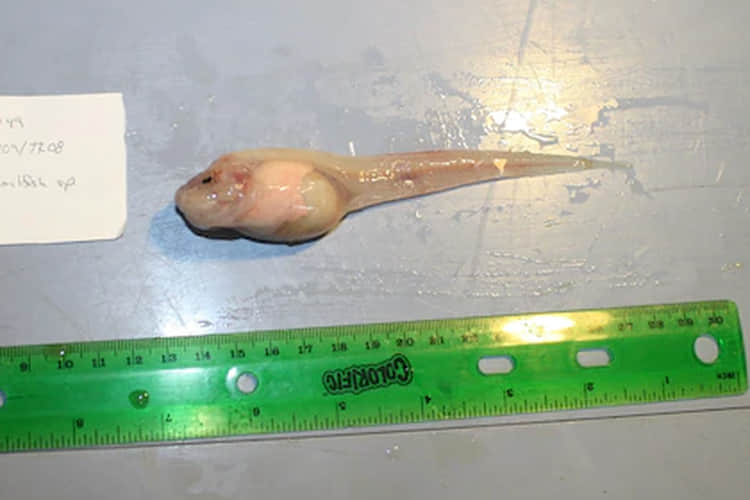Bizarre blue blobs have washed up en masse on beaches across South California—but they aren’t jellyfish or Portuguese Man O’ War as one might expect.
Photographs of the strange gathering were uploaded to social media by Point Reyes National Seashore, which stated that these creatures are actually Velella velella, also known as By-the-Wind Sailors. This was also backed up by Rita F. T. Pires, a research assistant at the Portuguese Institute for Sea and Atmosphere.
“The species usually forms large agglomerations when beached, as pictured, so it seems it could be the case,” she told Newsweek.
Velella velella are hydroid polyps (jelly-fish like creatures) that float on the ocean surface for their whole lives. They are usually only around 2 to 3 inches long and have a rigid “sail” on their backs that allow them to move in the wind, which can often result in them being blown toward land.

“Just like P. physalis [Portuguese Man O’ War], Velella is not one individual, but a colony of different specialized organisms (polyps), each responsible for different functions: feeding, protection, reproduction,” Pires said.
“However, P. physalis is a siphonophore. Both species belong to the Cnidaria phylum, although V. velella is more similar to jellyfish than P. physalis. It even goes through a medusa stage during a part of their life cycle, although of small size and not visible to the naked eye.”
These individual polyps are clones of each other, and all feed upon the plankton or small fish prey that the stinging polyps capture.

“They are portable colonies of hydroids, the “other” part of the life cycle of jellyfishes. We are used to seeing the jellyfish-looking part (called a medusa), but they have another part that’s like a tiny coral polyp or sea anemone, stuck to the bottom,” Lisa-ann Gershwin, a former research scientist at CSIRO and a science writer specializing in jellyfish
“When the medusa stage has babies, they grow up to be polyps, and when the polyps have babies, they grow up to be medusae! Weird, eh?”
Velella can wash up en masse as they did in Southern California as a result of strong winds combined with higher reproduction rates.
“The mass strandings of the species on beaches during springtime follow periods of increased reproductive activity, and represent regular and natural occurrences (blooms), consistent with the life cycle of the species,” Pires said. “V. velella is a hydrozoan that is found adrift, floating at the surface of the ocean with the help of a sail-like structure. Thus, their onshore transport is driven by particular wind and current regimes, similarly to the [Man O’ War].”

Previous mass strandings of Vilella have been recorded, including in Cornwall in the United Kingdom last year, when thousands of the electric blue creatures washed up in a town called Hayle. These creatures don’t all wash up at once during one of these events, however, due to a quirk of evolution.
“The cool thing is though that they have a mechanism to keep from stranding the whole population: out in the open ocean, they have right-handed and left-handed forms mixed in the population. But one or the other will ride any given breeze better or more poorly than others,” Gershwin said.
Southern California locals can rest easy, however, as these creatures can only sting very slightly and therefore pose little risk to humans.
“Its tentacles are very short, contrary to the Portuguese Man O’ War,” Pires said. “However, caution is always advised, given that each person can react differently and some minor allergic reaction can occur. So it is better not to touch them, even if stranded on the beach since the stinging cells will still respond mechanically to the touch.”

However, that doesn’t mean that they cannot cause any harm if they find their way to a more sensitive area of the body.
“I definitely wouldn’t put them on mucous membranes like your tongue or your eyes, or even touch those areas after handling them (best not to handle them!) because they do have stinging cells and mucous membranes are pretty delicate tissues. It’s just that under normal accidental contact, like an arm or leg, we don’t feel their sting,” Gershwin said.
The creatures rapidly dry out when they’re washed up onto the shore, so may eventually look like “crinkly and dry ovals of cellophane,” according to the post by Point Reyes National Seashore.
“So, if you happen to be out for a stroll and encounter these brilliant blue creatures, promise that you’ll jump up and down repeatedly shouting “Velella velella!” the post said.





